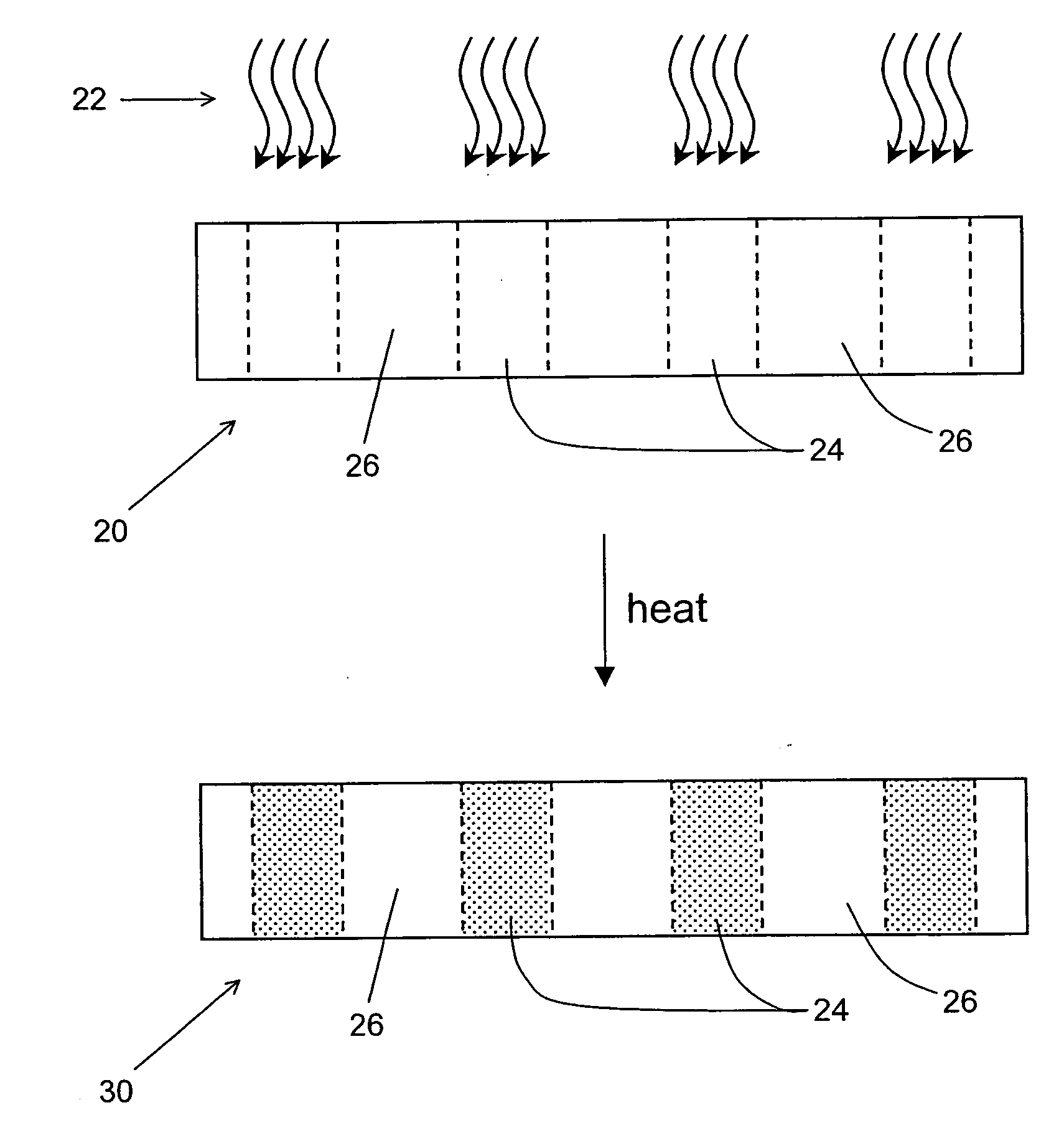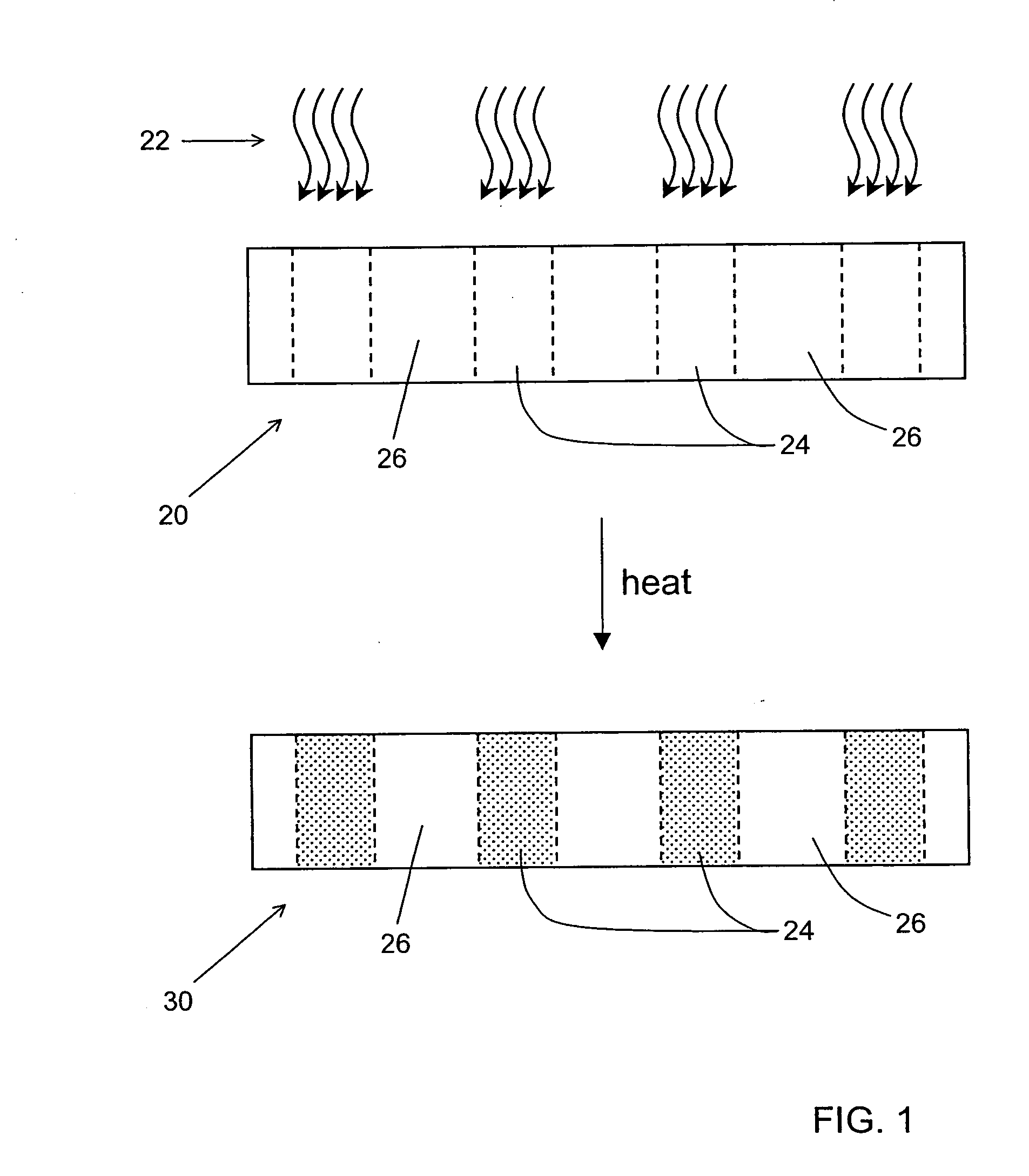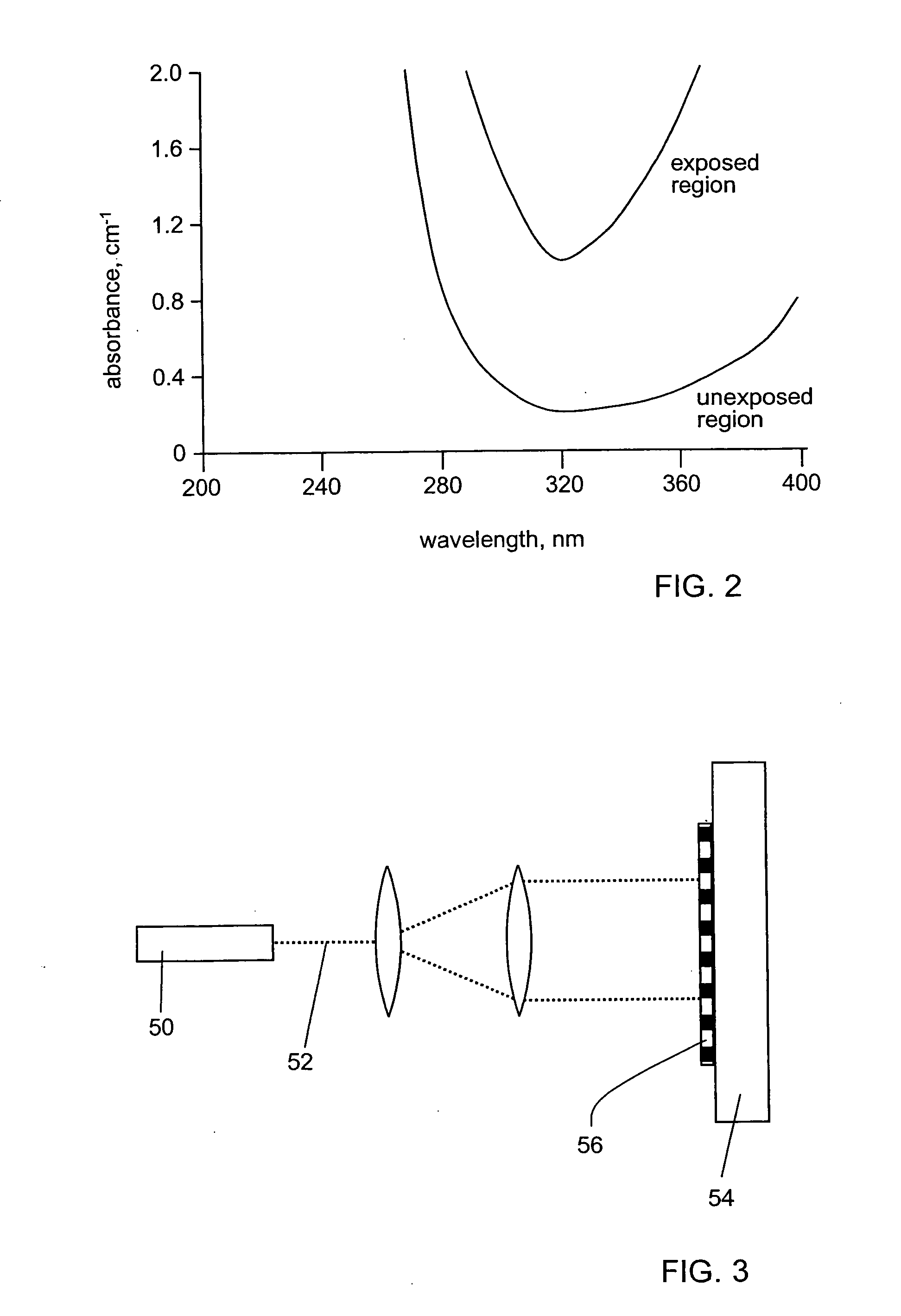Optical elements and methods of making optical elements
a technology of optical elements and optical elements, applied in the field of optical elements, can solve the problems of inability to achieve the desired combination of performance and cost, inconvenient manufacturing of optical elements, and inability to meet the requirements of many optical systems, and achieve the effect of high photoinduced refractive index changes and simplified manufacturing
- Summary
- Abstract
- Description
- Claims
- Application Information
AI Technical Summary
Benefits of technology
Problems solved by technology
Method used
Image
Examples
example 1
[0034]The photosensitive glass materials of Table 2 were melted using methods familiar to the skilled artisan. Iota sand, boric acid, sodium chloride, sodium nitrate, sodium silicofluoride, antimony trioxide, zinc oxide and alumina were used as batch materials. The batched mixture was ball milled for 60 minutes, melted at 1425° C. for four hours, cast into slabs 4 inches wide and 1 inch thick, and annealed at 650° C. Concentrations are given in wt % on an as-batched basis.
TABLE 2A [265 EA]BCD [265 IC]SiO267.167.167.167.1B2O315.115.715.716.1Na2O8.98.38.37.3Al2O30003.0ZnO5.05.05.05.0F1.71.71.71.7Sb2O32.02.02.01.0Ag0.660.440.220.33Cl0.220.220.220.22
example 2
[0035]Glass material A of Example 1 was formed into a 1 mm thick slide. Part of the slide was exposed to 248 nm radiation from a KrF excimer laser for 6 minutes. The fluence per pulse was about 31 mJ / cm2, and the laser operated at a pulse rate of 50 Hz. The slide was then heat treated in a furnace at 540° C. for 5 minutes, and allowed to cool to room temperature. FIG. 2 shows absorption spectra of the exposed region and the unexposed region. The skilled artisan will note that the exposed region of the sample developed significantly more absorption than did the unexposed region.
example 3
[0036]Glass material A of Example 1 was formed into slides 1 mm in thickness. The slides were exposed as shown in FIG. 3. The output of a KrF excimer laser 50 operating at 248 nm and 50 Hz was expanded such that its fluence was 40 mJ / cm2 / pulse. A slide 54 of glass material A was exposed from its largest face 56 through a chrome absorption mask 52 having a 10 μm grating pitch. After exposure for a desired time, the slide was thrust into a furnace at a desired temperature, and allowed to remain there for a desired time. The slide was removed from the furnace and allowed to cool to room temperature. The grating was about 15 mm long.
[0037]The Bragg gratings so formed in the glass slides were illuminated from the edge of the slide with collimated 633 nm radiation. The diffraction efficiency was used to determine the index contrast between the exposed regions and unexposed regions of the Bragg gratings using the equation
efficiency=sin2(2πΔnLλ)
where λ is the wavelength of the illuminating ...
PUM
| Property | Measurement | Unit |
|---|---|---|
| peak wavelength | aaaaa | aaaaa |
| melting temperature | aaaaa | aaaaa |
| temperature | aaaaa | aaaaa |
Abstract
Description
Claims
Application Information
 Login to View More
Login to View More - R&D
- Intellectual Property
- Life Sciences
- Materials
- Tech Scout
- Unparalleled Data Quality
- Higher Quality Content
- 60% Fewer Hallucinations
Browse by: Latest US Patents, China's latest patents, Technical Efficacy Thesaurus, Application Domain, Technology Topic, Popular Technical Reports.
© 2025 PatSnap. All rights reserved.Legal|Privacy policy|Modern Slavery Act Transparency Statement|Sitemap|About US| Contact US: help@patsnap.com



